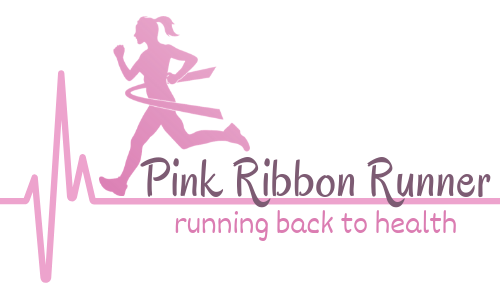The Easy Run: Why & How to Train Slower
Before I became a runner, I used to think that running was a fast and competitive sport. After all, runners compete in races. To win a race, I thought you needed to run faster than your competitors. And I thought that to run fast, you needed to train fast. But the more I learned about running, the more I realized that this is all not true.
This post contains affiliate links. As an Amazon Associate, I earn from qualifying purchases.
What do you mean this isn’t true?
Crossing the finish line first in races is for the elite runners. Yes, there are runners that train to win races. For the big races, like NYC, London, Boston, Toronto, Tokyo and others, the payout for ranking in the top 10 finishes can be quite significant. That field is dominated mostly by runners from Kenya and Ethiopia. These runners usually get special invitation to races.
The world-class marathoners run a sub-5-minute mile when they are racing. In 2019, Eliud Kipchoge from Kenya, ran a 4:34-mile pace to finish a marathon in just under 2 hours.
And this is slow by sprinter standards. The world’s fastest man, Usain Bolt, has run almost 28 mph in a 100-meter race. That is the equivalent of 2:08-mile, if it could be sustained that long.
But elite runners don’t train at elite paces
You may be surprised that Eliud Kipchoge will run a 9:40 pace on his easy run days. He runs this slower pace to recover from harder runs and be fresh for his next speed workout. Usain Bolt will train as slow as 75% of his sprint race pace.
And winning a race isn’t about crossing the finish line first
Wait! What? But isn’t that the definition of “win”? No, it isn’t the only definition.
WIN (verb): to succeed by striving or effort – Dictionary.com –
For the other non-elite 20 million+ of us, running isn’t about coming in first or placing anyways. The rest of us run for our own personal reasons.
Just crossing the finish line, no matter how long it took, can be a win. Achieving a personal best time is a win. Just getting outside and moving in the fresh air and sunshine is a win. Running with friends and the guilt-free food after a race is a win. Recovering from illness or injury to run again is a win.
There are so many ways we win at running. Crossing the finish line first is only one way to win a race.
Yet, with knowing all this, a good majority of us have this mindset that we must run fast and hard during every single run. Not only is this not necessary to improve, it can lead to stalled progression, over-training and injury.
“There is something magical about running; after a certain distance, it transcends the body. Then a bit further, it transcends the mind. A bit further yet, and what you have before you, laid bare, is the soul.”
– Kristin Armstrong –
What is an Easy Run?
I know what you are thinking. Running isn’t easy! So, what the heck is an “Easy Run”?
An easy run is a slow run, emphasis on SLOW! It is running well below your race pace.
Most experts say that an easy run should be run at around 60 – 90 seconds per kilometer below your 5 km race pace. It should be run with your heart rate in zone 1 or 2. That is at about 50 – 70% of maximum heart rate.
What I just said is all technical talk for a Conversational Pace. You should be able to tell a short story without losing your breath. You should be able to chat with your run buddy about family, life, politics or the weather without missing a word to catch your breath. An easy run should feel EASY!

Run Easy by Feel
I urge you to ditch your run watch. Put it in your pocket. Just run! Run by feel. Pay attention to your breathing. If your breathing starts to get faster and heavier, slow down.
An easy run should feel like you can run indefinitely.
But if you are having trouble keeping it slow or really need precision in your pacing, there are online running calculators that can calculate your easy pace for you.
Use a Training Pace Calculator to get an Easy Pace
My favorite running calculator is the Runworks Running Calculator. There are a few things you can calculate with this free and handy online running tool. The second checkbox in this tool is “calculate appropriate training paces” and Easy Run is the first number they give you. It even tells you how fast you should be running around a 400-meter track. Love this calculator.
The Easy Run for Beginners!
If 60 – 90 seconds slower than what you currently run brings you into a “walking” category, then WALK. Nothing wrong with that. It is all about doing it and improving slowly.
If this is you, then your harder runs will be at whatever pace you are capable. That doesn’t mean going all out and sprinting. It means running the distance scheduled at a pace that allows you to complete the entire distance. Then walk the other days at a brisk pace, keeping yourself at a conversational pace.
What an Easy Run is NOT
Running easy is not showing what you are capable of. An easy run is not running for speed. It isn’t pushing yourself. Running easy does not raise your heart rate into zone 4, 5 or even 3. It isn’t improving your VO2 max or aerobic fitness. It isn’t about working your running muscles hard.
Easy running is not slacking off!
Easy running is an essential tool for REPAIRING your running muscles, including the heart muscle, to become stronger and faster.

7 Benefits of the Easy Run
There are several benefits of training at a slower pace. Here are just seven of them.
1. Establishes Base Fitness
You are still working out during an easy run. You are still raising your heart rate into a fat burning zone. By running slower, you are maintaining a base level of fitness.
2. Promotes Proper Form
Because, in theory, you don’t get tired from an easy run, you can maintain proper form. During harder workouts we tend to slouch or compensate from being tired and our form suffers as a result.
Running easy helps you train your body to run strong and upright, leaning slightly forward with your abs engaged. Your neck, shoulders and arms are more relaxed and float in more natural positions with each stride. Your hips and legs move in sync to land your foot properly without added exertion.
So, you use the muscles in their proper position, which helps you maintain your form. This has lasting effects for harder workouts on other days. You will strengthen your form for longer and faster workouts.
3. Builds Endurance
Even though it may not feel like it, you are still building your endurance on an easy run. You are still running. But you are running at a pace that allows your muscles and cardiovascular system to repair itself. And this builds endurance better than when you work harder.
On an easy run, your body is repairing and building muscle fibers, not breaking them down. You are stimulating your body to grow more capillaries to nourish your muscles. And during a slow run, your muscle will make more mitochondria to give you more power to sustain them during longer runs.
4. Trains for Efficiency
Running slowly makes your body more efficient at running.
We have already talked about growing more capillaries and mitochondria. These things help your body use energy, move oxygen around and get rid of cellular waste more efficiently.
Long runs at an easy pace also train your body to use fat as an energy source. When you run fast, your body prefers carbohydrates as a quick form of energy. But these sugars are only available to our muscles in limited amounts and are burned off quickly during exercise.
Fat is where it is at! When we run slowly and for longer distances, our muscles start to use fat as its energy source. Fat provides unlimited amounts of energy. Running slowly trains your body to use fat over sugar.
Running slower is a great way to lose body fat, for this reason. Bonus!

Slow Burn: Burn Fat Faster by Exercising Slower
a book by Stu Mittleman
5. Establishes Routine
I’ve already said that you shouldn’t run hard all the time. It is not a sustainable way to train. Your body can’t repair itself when it is continually pushed and broken down. This is just a recipe for injury.
You can run more often if you keep it easy. Thus, you can maintain a routine for running.
I run every day. I have been doing this since December 2017. While I am NOT saying that you should run everyday. You need to listen to your body and do what works for you. But, I am telling you this because many have asked me how I do it without getting injured. At least 80% of my runs are easy. Every week I run 5-6 days easy and 1-2 days hard. This is my routine. And it works for me.
6. Good For Recovery
After a hard workout, your muscles need 30 to 60 hours to recover fully. Running at a slower pace allows you to get in a workout and let your muscles recover. In fact, an easy run can help your muscles recover faster, if you keep it slow.
An easy recovery run increases blood flow to your muscles, bringing in new proteins and nutrients to rebuild damaged fibers. Broken down proteins and toxic metabolites are flushed away from healing tissues. This all helps your body recover faster.
7. Allows Enjoyment of Running
When I know I have an easy run ahead, I get excited. I am more relaxed and care-free. I notice things on my slower runs that I don’t notice otherwise; the cooling breeze on my cheek, the warm sun on my face, the sound of my breathing or the rhythm of my feet hitting the pavement.
Chatting with friends is a great way to enjoy a run. And in order to have a conversation with your run buddies, you need to run at a conversational pace (aka. Easy Run).
Easy runs are a great way to take it all in. I have seen some fantastic things and enjoyed some great company on some of my long runs. I just needed to slow down so I didn’t miss out.

Why don’t we train slower?
This all sounds great, doesn’t it? So, then, why don’t we run slowly most of the time? Let’s look at 5 reasons why some continue to push themselves on every run.
1. Running slow takes longer
Yes, running slowly means that you are out there slogging through your miles for longer. You might be busy, short on time and need to get those miles in. So, you go fast to just get it done.
But you should find other ways to workout with the time that you have. Shortening the distance on an easy run has more benefit than running quickly to get all the miles in. Remember, you are repairing your muscles during this run. You are training your body to run more efficiently. This too is all apart of your overall training plan.
2. Slow is boring
Yes, seeing what you are capable of is exciting. I get it. Fast and hard can focus your attention on the workout. Intervals, fartleks and other speed work games can keep your mind occupied with the math. Running slow, especially during long runs, can be boring.
But you can do other things, such as listen to a podcast or chat with a buddy, to make an easy run enjoyable.
I wrote a post on ways to make running fun. Check it out for some ideas of how to alleviate boredom during your easy run.
3. Pushing yourself is habit
When I started running, every run was hard. I started running at a pace that wasn’t much faster than walking, so there was no choice but to push hard on every run. And as I improved, I kept up with this same level of exertion. I ran faster, pushing harder. There were no easy runs for me back then. I didn’t even know what easy running was.
And then I developed shin splints.
I was over-training. Had I known then what I know now, I would have saved myself the grief of injury.
We don’t need to continually push ourselves to run faster. Running slower will lead to running faster. It works. I have been running this way for several years now and my speed has improved.
Researchers and experts will tell you the same thing. You can, indeed, train slower to race faster.

80/20 Running: Run Stronger and Race Faster By Training Slower
a book by Matt Fitzgerald
4. Other’s Opinion of You
It shouldn’t matter what other people think of you, but it does. I have heard this countless times when other runners tell me why they are running slower than race pace. They feel compelled to announce to every other runner within ear shot these reasons. I get it. I have done this too.
But you know what? They really don’t care about your pace. If they are regular running buddies, they will know what you are capable of. They won’t fault you for running slow. And if they do? Why does that matter?
Are you running to impress people? No, likely not. There are much easier ways to impress people.
So, run for yourself. Run your easy runs solo, if you must. But I will bet that most people won’t even notice or care about the pace you are running.
5. Competitiveness
Okay, I understand this one too. You see that person ahead of you. Knowing you can run faster; you want to overtake them and leave them in your dust. But save that for the races. You shouldn’t be racing on training days. You should be focusing on you, not the person ahead of you.

How to Run Easy
Have I convinced you to run slower yet? I hope so. It is so important for a well-balance training program.
So, how do you do it? How do you slow down when you want to run fast? Here are 5 tips that may help.
1. Shorten Your Stride
Taking smaller steps can help you run slower. You want to “trot” along the pavement, keeping your feet light and rhythmic. Keep your hips relaxed.
2. Relax Your Arms
We use our arms to help propel us forward. When we run faster or uphill, we pump our arms to get us moving. Our leg movements automatically follow our arm swing.
The opposite is also true. Slowing your arm swing will help you run slower.
3. Lean Back Slightly
Leaning forward at the hip helps us run faster, using gravity to propel us.
But when we want to run slowly, we don’t need this extra lean. It will work against us. Still keep your abs engaged but maintain a more upright posture to help slow you down.
4. Focus on Landing Mid-Foot
Instead of reaching with your leg, lift your leg and land with your foot flat on the pavement. Running slowly can help you improve your form and move away from heel or toe striking.
Here is a great video from Runners Connect that explains how to run slower using proper form.
5. Test Your Pace
If you want to see if you are running slow enough, try holding your breath for 5 foot strikes. If you can manage this comfortably, then you are running slowly enough.
But, please, don’t pass out while attempting this. Breathe! Remember, it is a test to see if you are running slow enough, not a challenge to see if you can do it while running faster.
Of course, these are just some tips if you are having trouble slowing your pace. They aren’t meant for you to focus too intently on. The point is just to run at a slower speed on easy days.
Now go out and enjoy a nice, easy run!
Check out the Running Archives for more great tips on running.










I recently had the privilege of training on the same track as Brigid Kosgei. I was impressed by her explosive speed but equally impressed by her slow methodical turns around the track and even her “dancing” around the track, yes! She is so fast and talented but watching her train was eye opening. My 12 year old son was with me and he just started to run – it was great to see her train as an inspiration to us both. I reminded my son that slow and steady wins the race.
That is a great story and fabulous experience. Thank you for sharing.
I run 3 times a week about 10km every time. I have a garmin watch and my workouts are always in zone 5 or about 90%, I am 62 years young, I know this is not good but I still don’t know how to run slower. I feel o.k. running, well I don’t want to run 40km but I do go slower up hills or walk. My pace if about 6:50 a km.
I have run 2 half marathons at 2:30 and am training for a full marathon, virtually of course the Tamarack run but will do this in my home town.
Can I walk to be in my zone 3 on easy run days????
Your question brings up many other questions in my mind. What is your goal for your marathon? And have you tested your paces for the other heart rate zones? Does running at 6:50/km feel hard? Are you following a marathon training plan? A personal trainer can help guide you best on this question, since they can work directly with you and ask you all the questions about what you want to achieve from your running. But from the information you have given me here, based on your 6:50/km pace, I would think an easy run pace for you would be around 7:50 – 8:20/km, which is still a running pace. When you run this pace, how does it feel? Does it get your heart rate down to zone 2 or 3? Walking is great, especially for us Master Runners (over age 40). I would encourage you to walk on non-run days. Walking is a great cross-training activity and complements run-recovery well. But, if you are currently running 3 days per week and training for a marathon, you should still run 3 days per week. Reducing one of those 3 days to a walk, at your current level of fitness, wouldn’t likely be enough to get you to running a marathon. But like I said, answering this question is difficult without getting to know other aspects of your running and health. Great question though! I hope my answer helped.
I like the idea of running but in my opinion, I don’t feel like my body was put together to be a runner if that makes sense.
Running isn’t for everyone. But it sure is a great way to get cardio in!
Enjoyed reading your post. Lots of helpful advice!
This was really helpful, thank you! I’m a plodder, and was starting to wonder whether it’s worth it. But this helps me to see the benefits. I’ll work on improving my speed once or twice a week, but enjoy my plods otherwise! It may just be that I haven’t worked up my fitness enough yet. It’s a good point about walking on the easy days. At the moment there’s not much difference between my strong days & easy days! :-/
I totally agree that pushing ourselves has become a (bad) habit. I often need to tell myself to dial it back as I know I’ll burnout and regret it later on! Thanks for explaining this so thoroughly!
Great article and very timely as I am aiming to get back into running this month provided the weather cooperates.
Such a very helpful article! Thank you for the tips. Next time I go to gym, I would keep my trainings a bit slower than before. And I would definitely try to follow your tips on how to run easily.